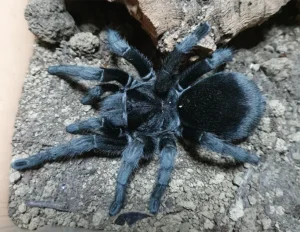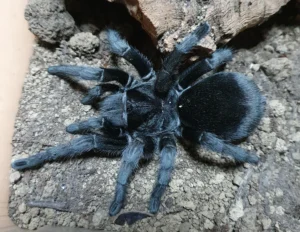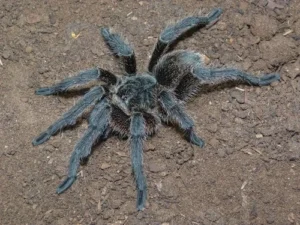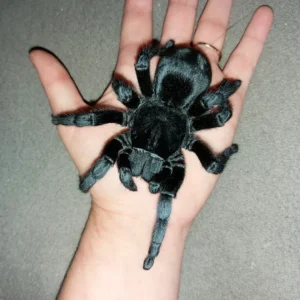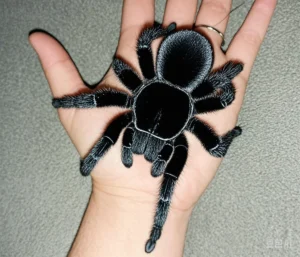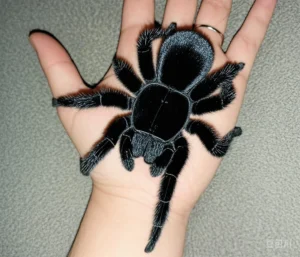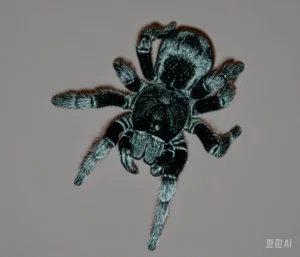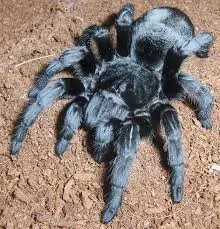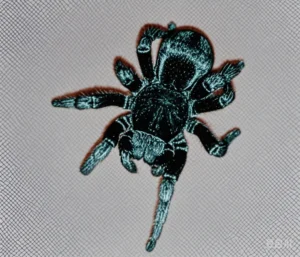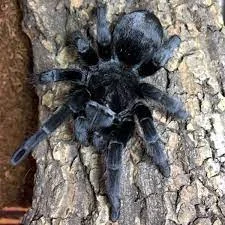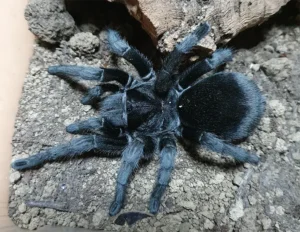Visual Acuity in Grammostola pulchra: Do They Recognize Shapes or Colors?
Tarantulas, including the Brazilian Black (Grammostola pulchra), possess eyes, but their visual capabilities are vastly different from humans or even many other animals. While they can detect light and movement, their eyesight is generally considered poor, and they are unlikely to perceive the world in terms of detailed shapes or colors.
Tarantula Eyes (Ocelli)
Most tarantulas, including G. pulchra, have eight eyes typically arranged in two rows on a raised bump called the ocular tubercle on the top front of their carapace. These eyes are not compound eyes like those of insects but are simple eyes called ocelli. Each ocellus consists of a single lens and a retina.
Despite having eight eyes, the structure of these ocelli suggests they are not adapted for forming sharp, detailed images. Their primary function seems related to detecting light levels and movement.
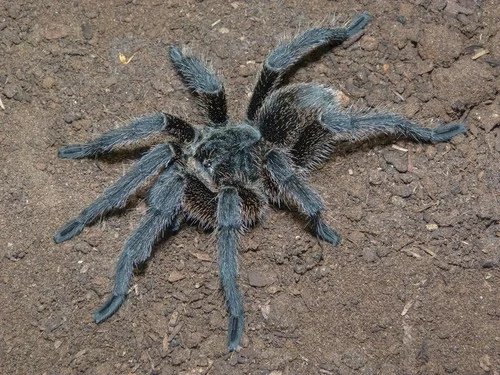
Detecting Light and Motion
The primary visual functions attributed to tarantula eyes are:
- Light Detection: They can certainly distinguish between light and dark. This helps regulate their circadian rhythms (activity cycles, favoring nighttime) and likely aids in finding shaded retreats like burrows during the day.
- Motion Detection: Tarantulas are sensitive to movement. An object moving into their visual field, especially something large or sudden, can trigger a defensive response (like fleeing or flicking urticating hairs) or potentially a feeding response if the movement pattern matches that of prey. However, this is likely perceived as a change in light patterns or a looming shape rather than a detailed image.
The overall [tarantula vision capabilities](https://www.lopehare.com/tarantula-medical-information/) are quite limited compared to their other senses.
Shape and Color Perception
There is little evidence to suggest that tarantulas like G. pulchra can recognize specific shapes with any significant detail. Their eyes lack the complexity needed for high-resolution image formation. It’s highly unlikely they can distinguish between different geometric shapes or recognize individual keepers visually.
Color vision is also considered highly improbable in most tarantulas. The photoreceptor cells in their eyes are likely geared towards detecting light intensity rather than different wavelengths (colors). They probably perceive the world in varying shades of light and dark, perhaps similar to a very blurry, low-resolution monochrome photograph.

Reliance on Other Senses
Given their poor eyesight, tarantulas rely heavily on other senses to navigate and interact with their environment:
- Touch and Vibration: Highly sensitive setae (hairs) covering their legs and body detect minute vibrations in the ground or air currents. This is their primary way of detecting prey, potential threats, and even mates.
- Chemoreception: Specialized setae on their legs and pedipalps allow them to “taste” and “smell” chemical cues in their environment, helping locate food or potential partners.
A tarantula’s primary perception of the world is based on vibrations and chemical signals, not detailed visual information.
Implications for Keepers
Understanding the limited vision of G. pulchra means realizing that:
- They won’t “recognize” you visually. Any perceived recognition is likely a response to familiar vibrations or perhaps chemical cues.
- Enclosure decoration colors are for the keeper’s aesthetic enjoyment, not the tarantula’s.
- Sudden movements or shadows cast over them are likely interpreted as threats, hence the importance of slow, deliberate movements when interacting near their enclosure.
While their eyes play a role in basic light and motion detection, the rich sensory world of a Grammostola pulchra is primarily experienced through touch, vibration, and chemistry, not sight.
References:
- Foelix, R. F. (2011). *Biology of Spiders* (3rd ed.). Oxford University Press. (General concepts on spider vision)
- Wikipedia contributors. (Accessed 2023). Simple eye in invertebrates. *Wikipedia, The Free Encyclopedia*. https://en.wikipedia.org/wiki/Simple_eye_in_invertebrates

